Agitation tank is a machine used to fully mix the pulp, chemicals and water, or to mix multiple chemicals. It is widely used in mixing operations in metal and non-metal beneficiation plant, mostly used in ore flotation plant.
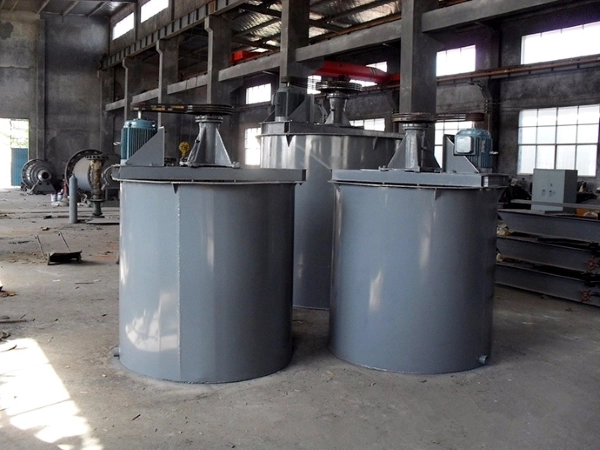
01 What are the types of agitation tanks?
According to different uses and structures, mixing tank can be divided into 8 types: ordinary agitation tanks, high-efficiency agitation tanks, high-temperature agitation tanks, pulp lifting agitation tanks, high-concentration pulp agitation tanks, cone-bottom agitation tanks, chemical agitation tanks and pickling agitation tanks. Let's see each type of agitation tank introduction below.
(1) Ordinary agitation tank
The ordinary agitation tank is used for the stirring of the pulp before the flotation operation.

(Ordinary agitation tank)
Working principle
The impeller rotates in the tank to drive the ore pulp to flow, and under the action of the circulating cylinder, multiple small cycles are formed in the tank, so as to realize the uniform stirring of the ore slurry.
Equipment features
The barrel can be lined with wear-resistant and anti-corrosion rubber; the impeller has high linear speed and strong slurry stirring ability.
(2) High-efficiency agitation tank
The high-efficiency agitation tank is used for the stirring of the pulp before the flotation operation. It is an upgraded version of ordinary agitation, which can improve the recovery rate by 1-3%.
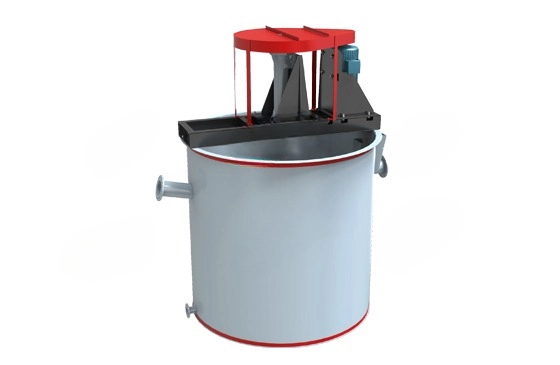
(High-efficiency agitation tank)
Working principle
The impeller rotates in the tank to drive the ore pulp to flow, so that the ore particles and the agent are fully contacted.
Equipment features
It is an upgraded version of the ordinary agitation tank, with large impeller diameter and strong mixing capacity. It accelerates the pumping ability and makes the flotation chemical and ore circulation ability stronger.
(3) High temperature agitation tank
The high temperature agitation tank is suitable for the slurry mixing operation that requires heating and heat preservation. It has a special high temperature resistant inner layer, and the interlayer is filled with asbestos heat preservation material.
Working principle
The impeller rotates in the tank to drive the ore pulp to flow, so that the ore particles and the agent are fully contacted.
Equipment features
The inner layer is lined with high temperature resistance, and the interlayer is filled with asbestos insulation material, which can be heated and stirred.
(4) Slurry lifting and agitation tank
The slurry lifting agitation tank has both a agitation function and a lifting function. This equipment can be selected when the height difference of the pulp is insufficient, or the difference is too small to be transported by a pump.
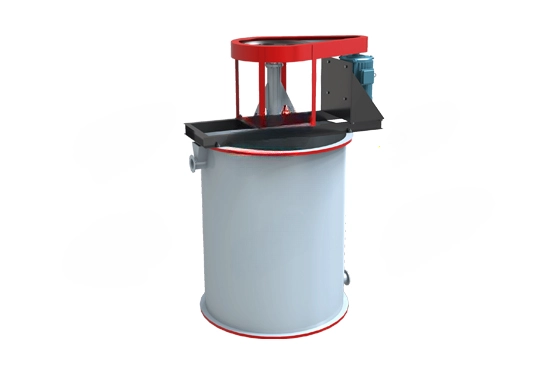
(Slurry lifting and agitation tank)
Working principle
Negative pressure is generated in the center of the impeller through the high-speed rotation of the centrifugal impeller, and the external slurry is sucked into the tank through the cylinder seat at the top of the impeller, and the liquid level in the tank is continuously raised. The ability to enhance is achieved.
Equipment features
The lifting height can be determined according to customer requirements, generally up to 1.2m.
(5) High-concentration pulp agitation tank
The high-concentration pulp mixing tank is used for the mixing of high-concentration pulp such as mortar backfilling or underflow buffering of thickeners.

(High-concentration pulp agitation tank)
Working principle
The mixing shaft adopts the structure of upper and lower double impellers. When rotating at high speed, the upper impeller presses down the pulp, the lower impeller lifts the pulp upward, and the two pulps collide in the middle, and then spread to the surrounding, so that the pulp with higher concentration forms a large loop in the whole tank, and makes the pulp inside the tank. The upward water flow is generated, which greatly reduces the sedimentation speed of the pulp and improves the stirring capacity to adapt to the stirring of the high-concentration pulp.
Equipment features
wear-resistant rubber plate impellers are used to increase wear resistance. The diameter of the impeller and the diameter of the circulating cylinder should be increased, and the concentration of the stirring slurry is as high as 75%.
(6) Conical bottom agitation tank
The conical bottom agitation tank is used for mixing and agitation the pulp and chemicals before flotation.

(Conical bottom agitation tank)
Working principle
The impeller rotates in the tank to drive the flow of the pulp to achieve full mixing of the pulp.
Equipment features
The barrel can be lined with wear-resistant and anti-corrosion rubber; the discharge capacity is high.
(7) Chemical agitation tank
The reagent agitation tank is used for the mixing and agitation of the flotation reagent in the flotation plant.
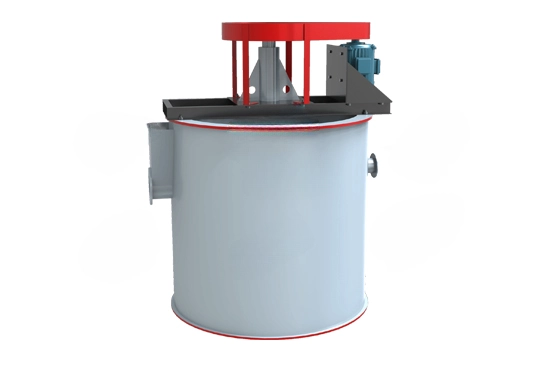
(Chemical agitation tank)
Working principle
The liquid flow is driven by the rotation of the impeller in the tank, so that the medicine and the liquid are fully integrated.
Equipment features
The barrel can be lined with wear-resistant and anti-corrosion rubber. Strong ability to mix liquids and medicines.
(8) Pickling agitation tank
The pickling agitation tank is used in the cyanidation plant of gold and silver ore, and is used in the pickling operation of carbon after desorption and electrolysis.
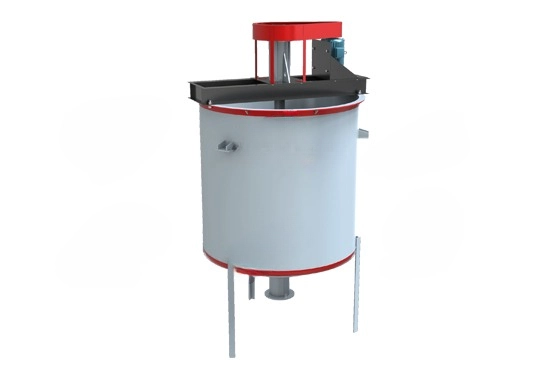
(Pickling agitation tank)
Working principle
The impeller rotates in the tank to drive the acid liquid to circulate, so that the carbon in the tank can be fully cleaned.
Equipment features
stainless steel or acid-resistant and wear-resistant rubber.
02 How does structure of agitation tank affect slurry concentration?
The impeller speed and its position in the agitation tank have a certain influence on the slurry concentration. In the vertical direction, the upper and lower regions of the impeller form two vertical circulations respectively; in the horizontal direction, a circumferential circulation is formed in the agitation tank. The slurry velocity in the blade area is the largest, and the slurry velocity in the outer area of the impeller is smaller. The stirring speed has a significant effect on the distribution of the slurry concentration in the agitation tank. The test results show that the optimal stirring speed is 70r/min, and the optimal impeller height is 4.77m.

(Structure of agitation tank)
Moreover, the different structures of the agitation tanks are suitable for stirring the pulp of different concentrations. For example, the agitation of medium-low concentration ore pulp generally uses a single impeller without a circulating drum after the agitation tank, and the speed of the impeller is relatively low. For the stirring of high-concentration pulp, it is necessary to adopt a circulating cylinder structure or a multi-impeller structure, and the speed of the impeller is relatively high.
03 How to install and debug the agitation tank?
The agitation tank is installed on a stable and reliable foundation, the tank body should be level, and the main shaft should be vertical. After confirming that the installation and adjustment are reliable, the equipment should be tested empty. During the test run of the empty car, carefully observe its stability and listen for abnormalities and noises. The test run is generally not less than 0.5h. After the test, it should be run with clean water, and then put into production.
04 How to maintain the agitation tank?
In actual production, in order to ensure the smooth progress of the mixing operation and prolong the service life of the agitation tank and accessories, the operator should regularly overhaul and maintain the agitation tank. The overhaul and maintenance procedures for the mixing tank are as follows:
(1) Overhaul procedures
The overhaul cycle should be carried out according to a minor repair every 1-3 months, a medium repair every 12 months, and a major repair every 60-120 months.
Minor repair content
●Check the wear of impeller and cover plate;
●Replace the scraper shaft and bearing seat;
●Replace the scraper and scraper shaft;
●Change the motor bearing oil.
Middle repair content
●Replace the vertical shaft bearing;
●Replace the shaft bracket;
●Replace the impeller cover.
Overhaul content
●Replace the foam tank and repair the flotation tank;
●Replace the pipeline gate, etc.
(2) Maintenance procedures
The following maintenance procedures should be carried out every 6 months.
●Operators and fitters check whether all bearings are proper and well sealed, and change the oil;
●The mechanic checks the impeller and stator wear;
●The fitter checks whether the tightness of the belt is appropriate, the wear of the pulley,
●Workers check whether there is water leakage in each pipeline and gate, and whether the tank body and various components are in good condition;
●Electric and fitter check whether the motor bearing is in good condition:
●The electrician cleans the electrical circuits to ensure no leakage, and the electrical appliances are sensitive and reliable;
●Operators, electricians and fitters should lubricate regularly according to the provisions of the lubrication chart.
05 What is the price of the agitation tank?
Due to the different types and specifications of the mixing tank, the price is also different. The price of agitation tanks for mining is generally 808$~29.400$. High-efficiency mixing tanks and high-concentration slurry mixing tanks are more expensive than other types of agitation tank.
06 Application cases of agitation tanks in mines
(1) Myanmar 500TPD copper flotation plant
After the copper ore of this project is crushed in two stages and one closed circuit, it is fed into the grid type ball mill-high weir type spiral classifier operation system. The material with unqualified particle size is returned to the ball mill for regrinding. The pulp that fully stirred by high-efficiency agitation tank is subjected to a flotation process of one roughing + two beneficiation + three sweeps to obtain qualified concentrate.

(2) Vietnam 120TPD gold flotation plant
The project adopts a closed-circuit grinding-flotation process (one roughing, two concentrating and three sweeping). The ore is fed by a belt conveyor into a closed-circuit grinding process consisting of a grid-type ball mill and a high-weir-type spiral classifier to obtain ores with qualified particle size. The materials with qualified particle size are then self-flowed to the high-efficiency agitation tank for dosing and slurry mixing through the classifier.
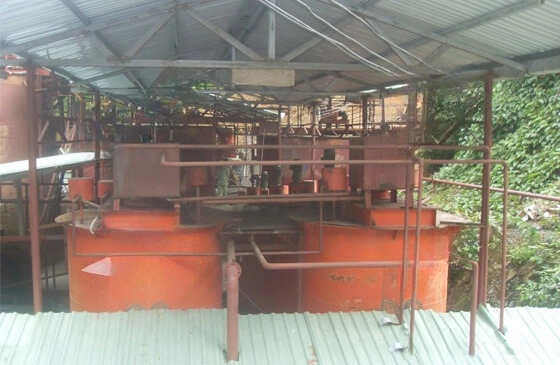
07To wrap up
The above is an introduction to various aspects of agitation tank for mineral processing. As an auxiliary equipment, the mixing tank is one of the essential equipment in the concentrator. If you want agitation tanks or have other questions about the machine, please leave us a message. We will contact you as soon as possible.
- Random article
- Popular articles
- Popular comments
- Tin ore flotation+gravity separation+magnetic separation process
- Iron Ore Combined Beneficiation Process
- Gold Mine Combined Beneficiation Process
- Gold Ore Thiourea Beneficiation
- Nickel ore priority flotation process(Sulfide ore)
- Lithium ore reverse flotation process
- Processing Lithium Ore: Artificial Selection, Gravity Separation, Flotation




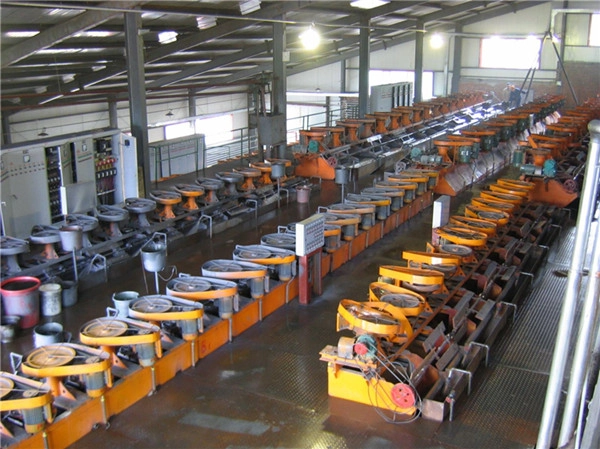

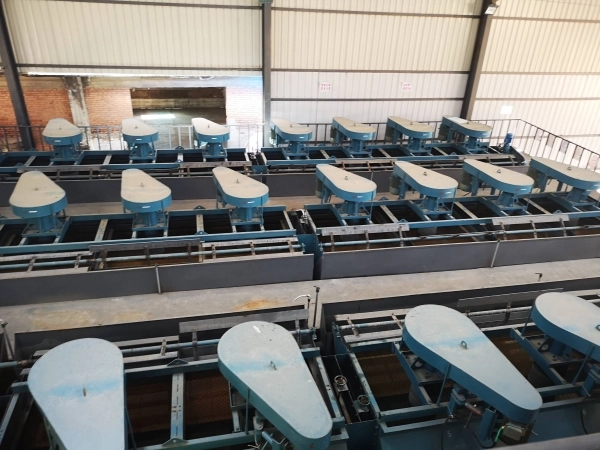
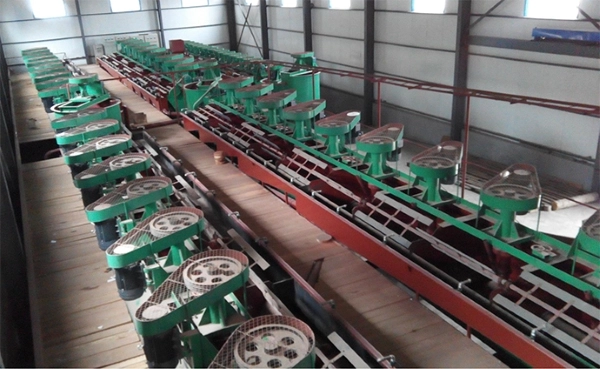


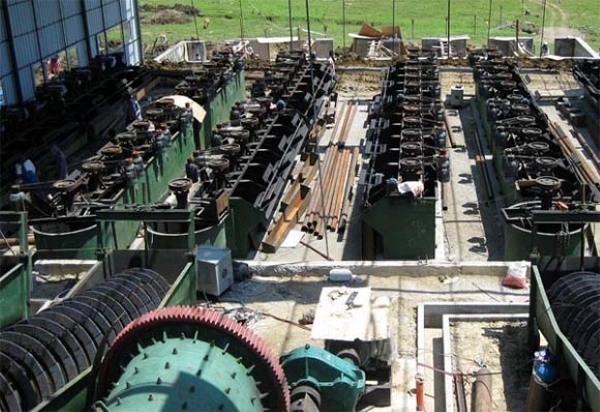



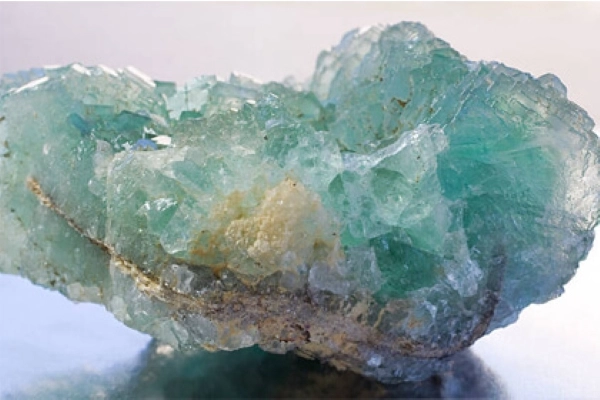

Leave a message with your needs or comments
Add comment: